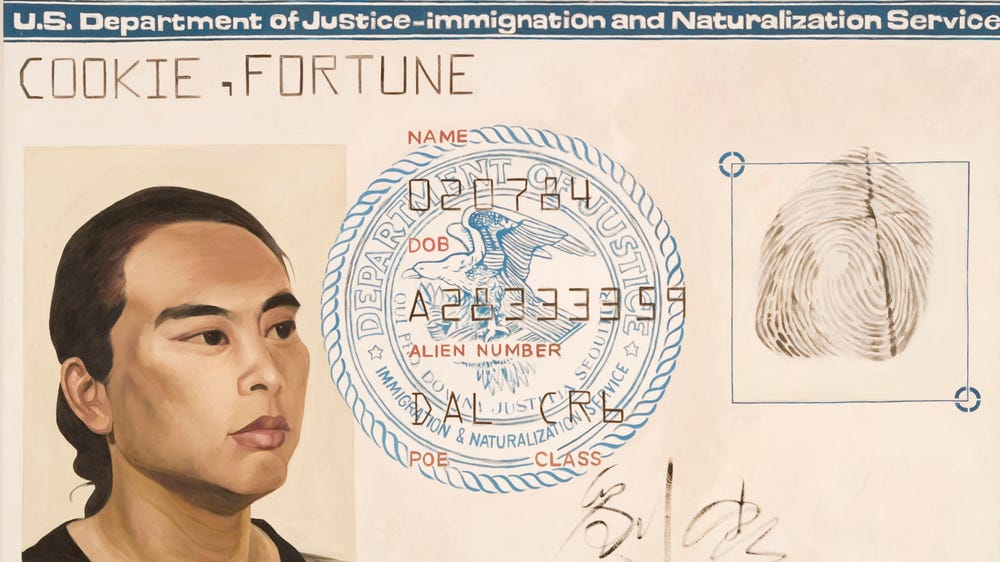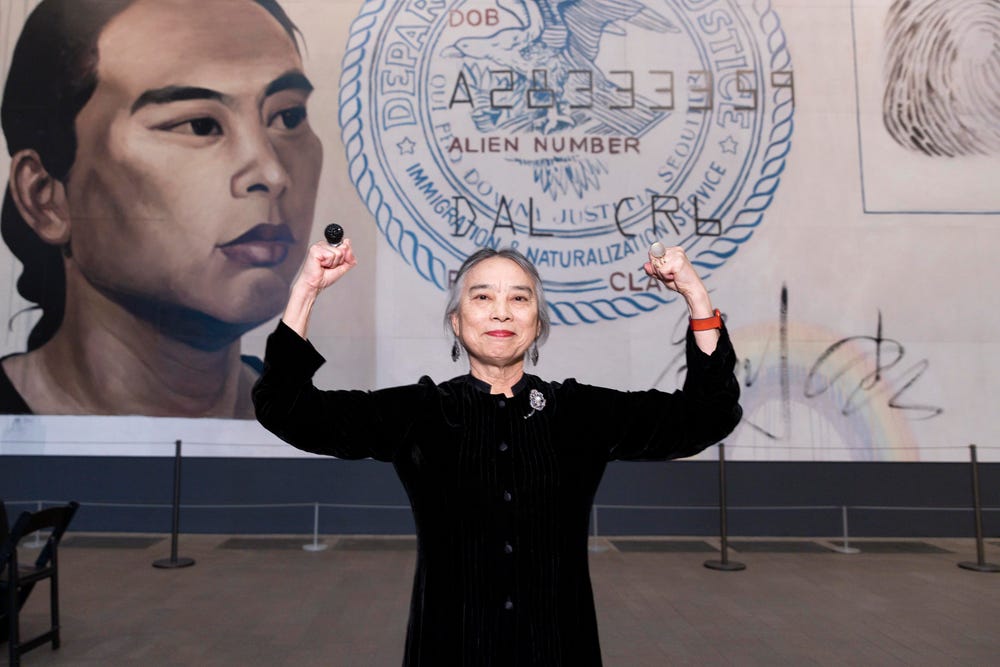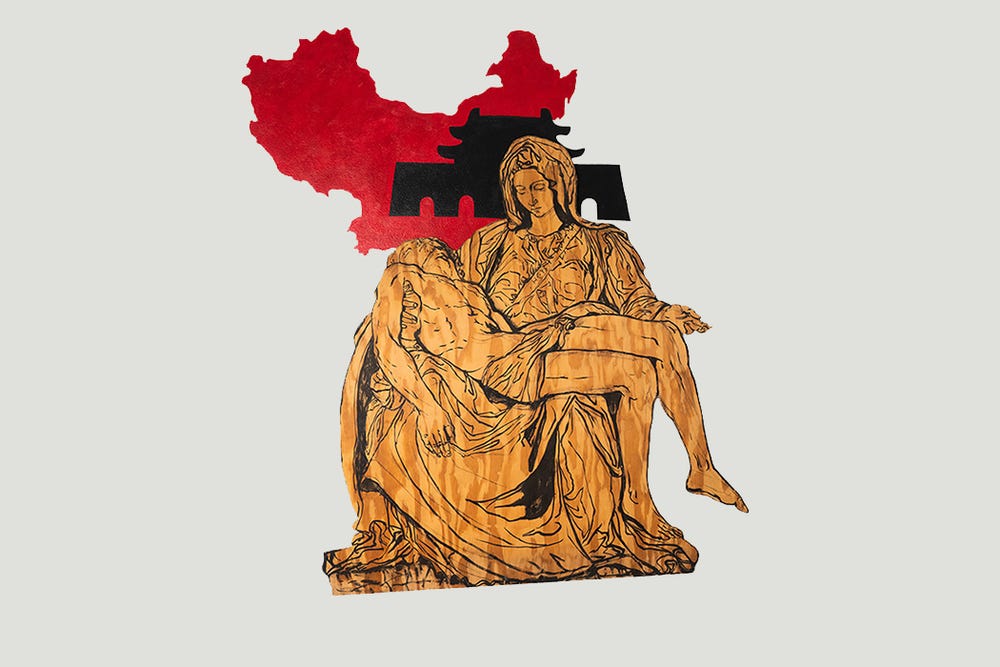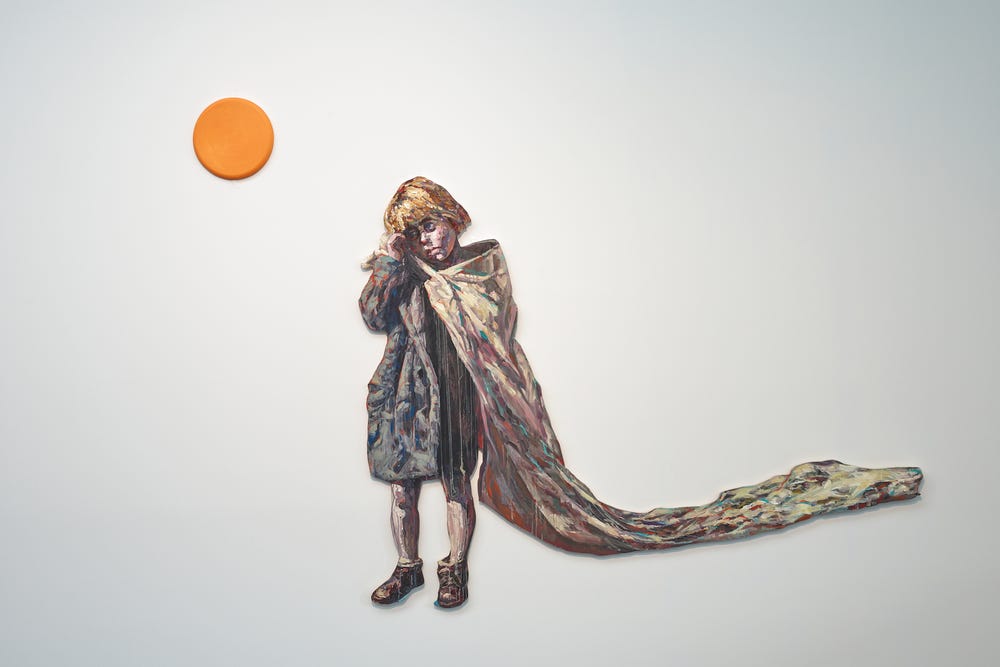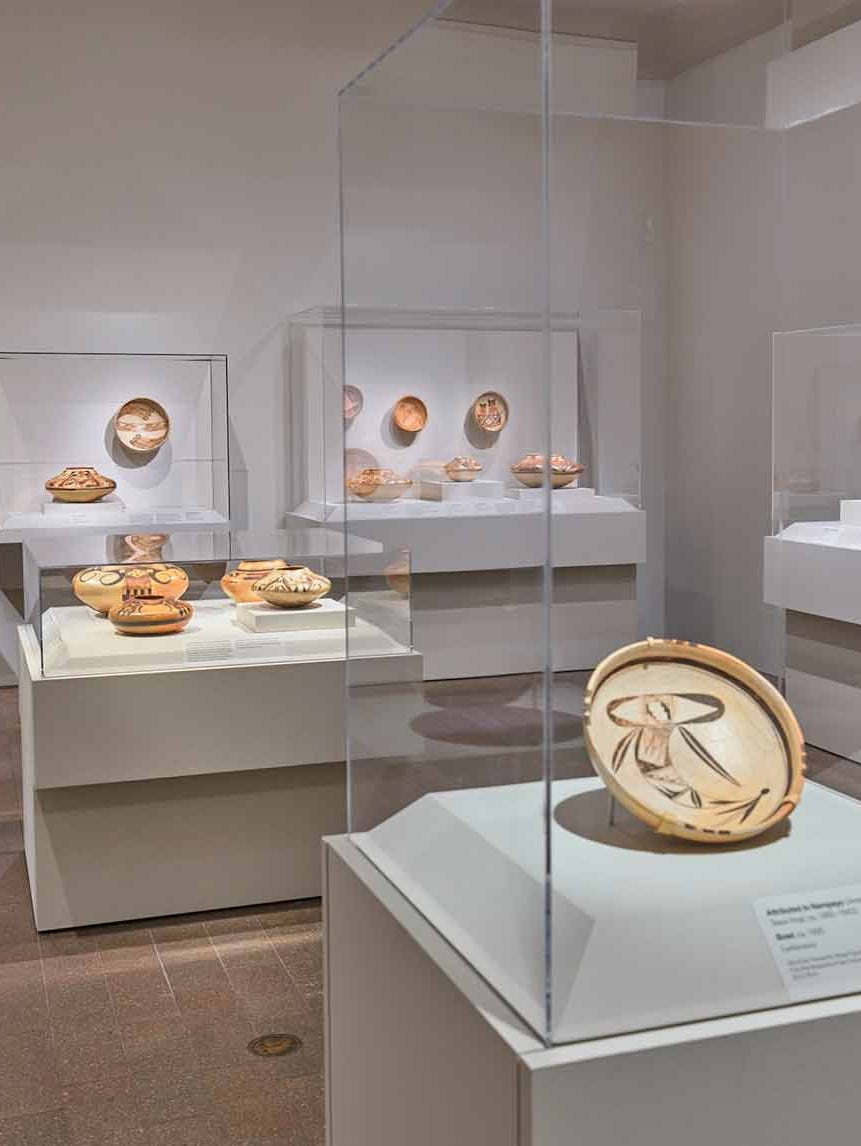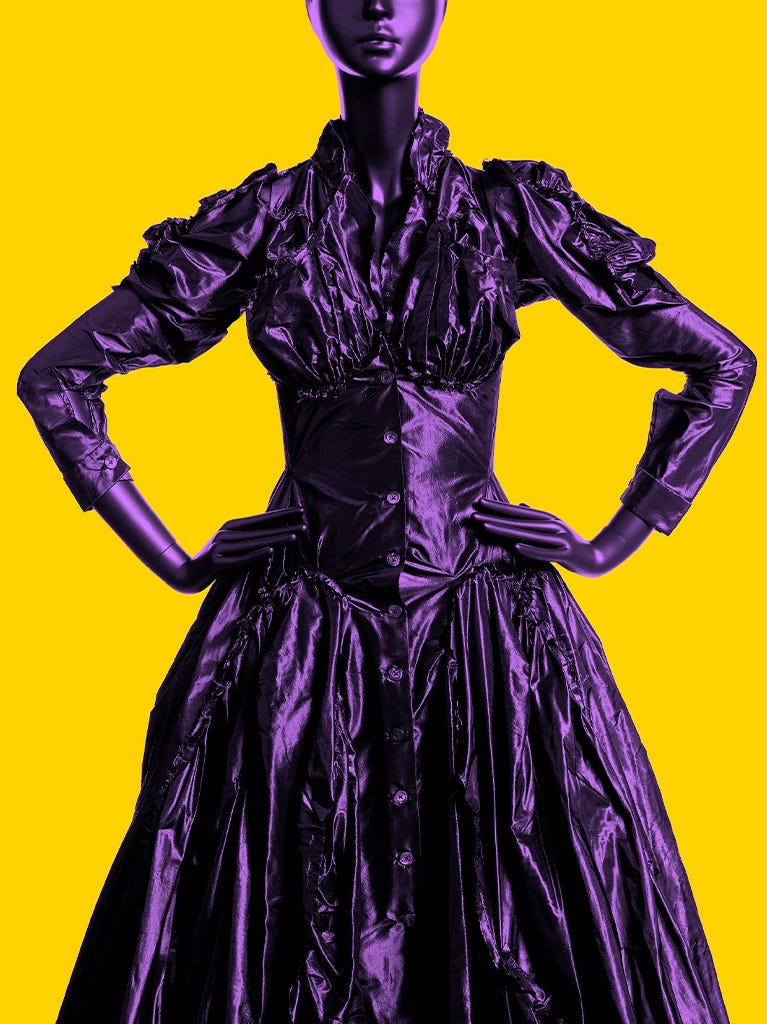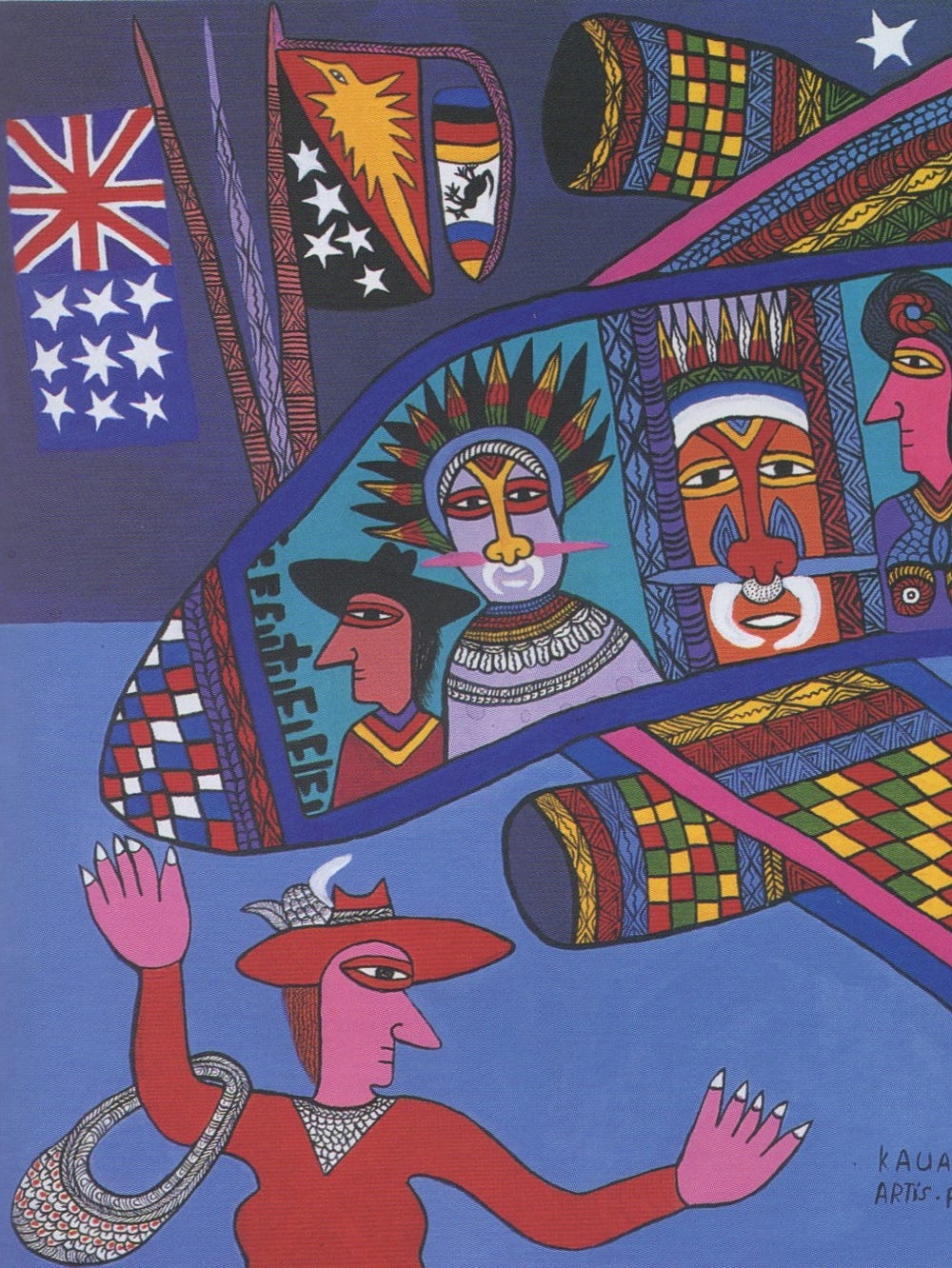Hung Liu, Resident Alien (detail), 1988. Oil on canvas, 60 x 90 in. (152.4 x 228.6 cm). Collection of the San Jose Museum of Art, Gift of the Lipman Family Foundation. © Hung Liu. Image © San Jose Museum of Art. Photograph by Douglas Sandberg
Hung Liu: Golden Gate (金門)
Born in Changchun, China, in 1948, Hung Liu grew up under the Maoist regime. Trained in the Socialist Realist style of painting, she elevates the subjects of archival photographs, re-creating them in the grand scale and lyrical style of history painting. Challenging primary sources, officially sanctioned documents, and revisionist accounts, Liu foregrounds displaced and wandering people frequently left out of traditional historical narratives and resurfaces stories lost to time. In Hung Liu: Golden Gate (金門), her site-specific installation combining existing and new work in Wilsey Court, Liu highlights international and domestic narratives of migration. Reimagining some of her most iconic paintings, such as Resident Alien, through the lens of her personal trajectory, she places herself among and celebrates the people who arrived in California from both land and sea.
In depth
As a young adult, Liu witnessed the destruction of a mosque in Dongsi, a subdistrict of Beijing, and her shock at hearing the official reports boldly lie about what had occurred greatly informed her desire to stand as a witness to history. Playing with the grand tradition of Chinese history painting, Liu recontextualizes historically sourced images in her paintings to explore history in its multiple iterations, examining the slippage between the primary sources, official sanctioned histories, and revisionist accounts. These mementos exist in varying conditions, having survived individual and institutional purges that erased any suggestion of anti–Communist Party activities. Her focus also includes groups of people who are routinely left out of grand historical narratives: prostitutes, peasants, victims of famine, and prisoners. Liu reaches into the past and recovers narratives that would have been otherwise forgotten.
Moving to San Diego in 1984, Liu began her graduate studies at the University of California, San Diego. After she began teaching at Mills College, Oakland, in 1992, Hung started heavily researching California history, noting differences in the way she had understood it as a child in China and as an adult citizen of the United States. Her exhibition Old Gold Mountain, held at the de Young in 1994, explored the history of Chinese American laborers in the United States by questioning the epistemology of history itself and its authorship. In Hung Liu: Great Granary by Wu Hung (2010) Liu asks, “What kind of thing is history? What kind of thing can bear witness to history? I had the sense that history had its one-sidedness and its mutability. Also history is a very subjective thing. What you choose to include and what you don’t — there’s absolutely no way you can encompass all the things you might.”
Working with the Oakland Museum of California, Liu recently explored the archive of photographer Dorothea Lange, which focused on documenting migrants during the Dust Bowl era of the twentieth century. Like Liu, Lange’s focus on the dispossessed creates a wellspring of compassion. According to Bransten’s Hung Liu: Promised Land (2017), “Statistics go right past us, but when we see the faces of the people who suffer it means so much more,” said Lange. Liu breathes life back into these faces through her interpretation of Lange’s work, interpreting the source compositions with dynamism and color.
The artist was inspired by migrants who, like herself, came to California and became an indelible part of its history, society, and culture. Liu’s personal history anchors Hung Liu: Golden Gate (金門), as the central wall of the installation features a massive reinterpretation of her work Resident Alien that first debuted at the Capp Street Project in 1989. Flanking the central piece, Liu’s art draws parallels between the journeys of the Americans who came from East Asia with those captured in the photography of Dorothea Lange.
Stories
Gallery
Sponsors
This exhibition is organized by the Fine Arts Museums of San Francisco.
Generous Support
Lipman Family Foundation
McManis Wigh China Foundation
Rena Bransten Gallery
Turner Carroll Gallery
W.L.S. Spencer Foundation
Additional support is provided by Janet Mohle-Boetani and Mark Manasse.
The production of Resident Alien 2 is made possible by the generous support of the Jordan Schnitzer Family Foundation.
The Fine Arts Museums of San Francisco’s Contemporary Arts Program is made possible by Presenting Sponsor the Lisa & Douglas Goldman Fund. Significant support is provided by The Harris Family and the Vance Wall Foundation. Additional support is provided by Joachim and Nancy Hellman Bechtle, Katie Colendich and Albert d'Hoste, Jeffrey N. Dauber and Marc A. Levin, Shaari Ergas, Katie Hagey & Jill Hagey in memory of their mother, Mary Beth Hagey, Ella Qing Hou and J. Sanford Miller, Kaitlyn and Mike Krieger, Lore Harp McGovern, Jessica and Jason Moment, Katie Schwab Paige and Matt Paige, Mr. and Mrs. Charles R. Schwab, David and Roxanne Soward, Gwynned Vitello, Zlot Buell + Associates, and the Contemporary Support Council of the Fine Arts Museums.
